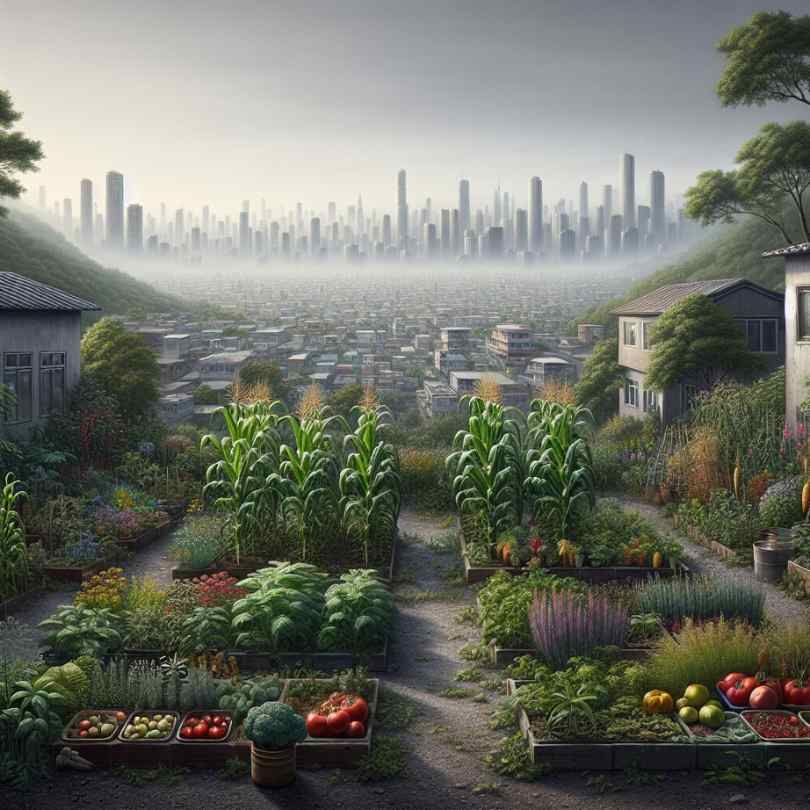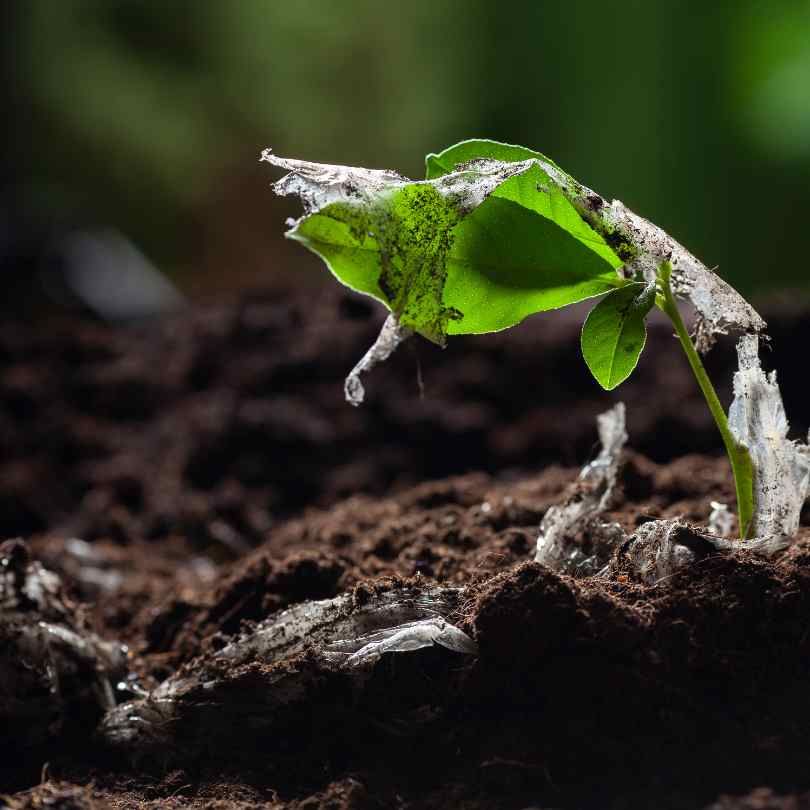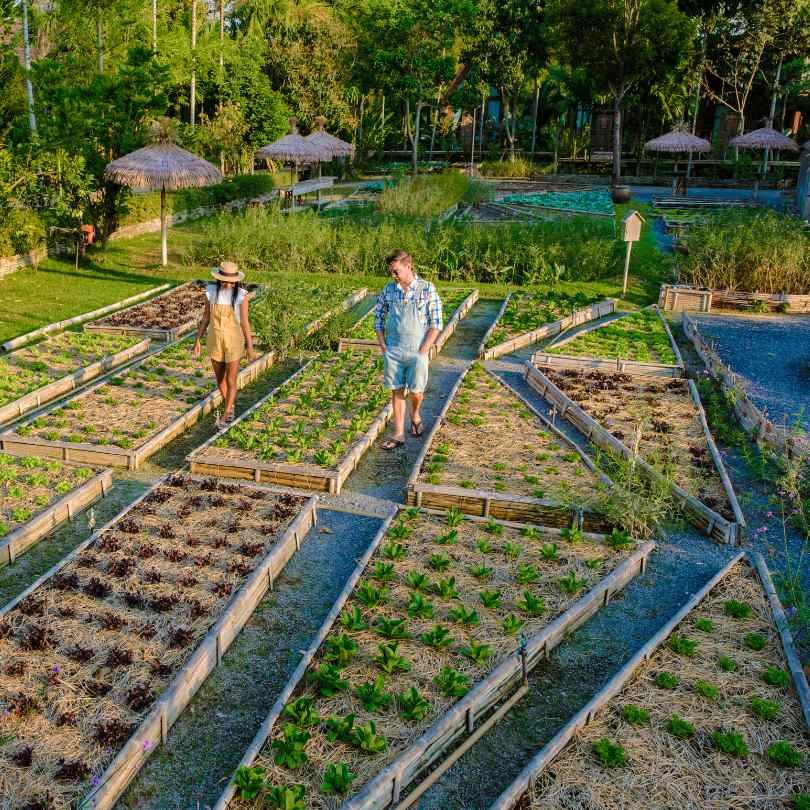
Key Takeaways
Identify common urban pollutants and understand their impact on garden plants.
Learn to select pollution-resistant plants that can thrive in urban environments.
Discover soil remediation techniques to protect and improve urban garden health.
Implement barrier planting strategies to shield your garden from contaminants.
Use rainwater collection and organic pest control to enhance urban garden sustainability.
Thriving Gardens in the Concrete Jungle
Let’s face it, urban gardening is no walk in the park. But with the right knowledge, your concrete plot can turn into a lush oasis amidst the hustle and bustle. The key to success lies in understanding the unique challenges urban environments pose to your green friends. Pollution, limited space, and soil contamination are just the tip of the iceberg. Yet, with a dash of ingenuity and a sprinkle of perseverance, your urban survival garden can not only survive but thrive.
Understanding Urban Garden Vulnerabilities
Before you even get your hands dirty, it’s crucial to grasp the vulnerabilities unique to urban gardens. Pollution – both in the air and soil – can wreak havoc on your plants, affecting growth and yield. Space is often at a premium, meaning every inch of your garden must be optimized. And let’s not forget the soil, which in city settings can be anything but ideal for growing your greens. But don’t fret; with the right approach, these challenges can be overcome.
Crucial Elements for Urban Garden Success
Soil testing and remediation to ensure a healthy growing medium.
Choosing the right plants that can handle urban conditions.
Strategic garden planning to make the most of limited space.
Implementing barriers and filters to protect against pollutants.
Regular monitoring and adapting to changing urban conditions.
Now, let’s dig into the nitty-gritty of urban gardening. And remember, your patience and effort will pay off with every bite of homegrown goodness.
Navigating the Grey Skies: Plants and Pollution

Pollution is the invisible enemy of the urban gardener. It comes in many forms – from the exhaust of cars to the remnants of industrial activity. But here’s the thing: plants are resilient. With the right knowledge, you can help them put up a formidable fight against these invisible foes.
Common Urban Pollutants and Their Sources
First off, let’s identify the culprits. Common urban pollutants include:
Particulate matter from construction and vehicles.
Nitrogen oxides and sulfur dioxides from industrial emissions.
Heavy metals like lead and cadmium, often remnants of past industrial use.
These pollutants can come from a variety of sources, including busy roads, factories, and even historical contamination of the site. Knowing what you’re up against is the first step in protecting your garden.
How Air and Soil Contaminants Affect Plant Health
Plants, like humans, need a clean environment to flourish. Airborne pollutants can coat leaves, blocking sunlight and reducing photosynthesis. Soil contaminants can be taken up by plants, affecting growth and potentially making crops unsafe to eat. But don’t lose hope – there are ways to fight back and keep your garden healthy.
Green Warriors: Choosing Pollution-Resistant Plants
Now, let’s talk about the fighters of the plant world. Some plants have natural defenses against pollution, making them perfect for urban gardens. These green warriors can not only survive but also help improve the air quality around them.
Selecting Species with a Natural Defense
When choosing plants for your urban garden, consider those with a thicker cuticle or waxy leaf surface. These plants are often more resistant to pollutants because they can prevent particles from penetrating their leaves. Examples include:
Honeysuckle (Lonicera spp.)
Juniper (Juniperus spp.)
Boxwood (Buxus spp.)
These species can serve as the first line of defense in your pollution-fighting garden army.
The Role of Plants in Mitigating Urban Pollution
Plants don’t just survive pollution; they can actively reduce it. Through the process of photosynthesis, plants absorb carbon dioxide and release oxygen, helping to clean the air. Moreover, plants can absorb other pollutants in the air and soil, playing a vital role in mitigating urban pollution.
The Battle Against Toxins: Soil Remediation
Soil is the foundation of your garden. In urban areas, it’s often contaminated with heavy metals and other pollutants. But fear not, because soil remediation is your next step to a thriving garden.
Basic Techniques for Cleaning and Protecting Soil
Start by testing your soil to know exactly what you’re dealing with. Once you have the results, you can employ several techniques to clean and protect your soil:
Adding organic matter like compost can help bind heavy metals and reduce their uptake by plants.
Phytoremediation, using plants like sunflowers or mustard to extract toxins from the soil.
Using raised beds with clean soil to avoid existing soil contaminants.
These methods will help ensure that your plants are growing in a safe, nutrient-rich environment.
Composting as a Strategy to Reinforce Soil Health
Composting is not just about waste reduction; it’s a powerful tool for soil health. By adding compost to your garden, you’re improving soil structure, adding essential nutrients, and enhancing the soil’s ability to hold water – all critical factors in an urban setting.
Shielding Your Greens: Barrier Planting and More
Physical barriers can be highly effective in protecting your garden from pollutants. By understanding how to strategically position plants and create barriers, you can shield your greens from the harsh urban environment.
Strategic Plant Positioning Against Pollutants
Think of your garden as a fortress. The way you position your plants can create natural barriers against pollutants. Tall, dense plants can block wind-borne contaminants, while ground cover can reduce soil erosion and prevent the resuspension of soil particles.
Creating Windbreaks and Filters for Garden Protection
Windbreaks are not just for rural farms; they have a place in urban gardens too. By planting rows of shrubs or trees, you can filter out pollutants before they reach your sensitive crops. Evergreens and other dense foliage plants work best for this purpose.
Adapting to the Urban Climate: Water and Air Quality Measures
The urban climate can be tough on gardens, but with the right water and air quality measures, you can create a more hospitable environment for your plants.
Collecting and Using Rainwater to Avoid Contaminated Sources
Rainwater harvesting is a simple yet effective way to ensure your plants get the clean water they need. By collecting rainwater, you’re not only reducing your reliance on potentially contaminated municipal water but also promoting sustainability.
Purifying the Air: Plants as Natural Air Filters
Some plants are natural air purifiers, absorbing pollutants and releasing clean oxygen. Incorporating these plants into your garden can help purify the air around your home. Spider plants, snake plants, and peace lilies are all excellent choices for this purpose.
Eco-Friendly Pest Control in Polluted Areas
Pests are attracted to stressed plants, and pollution can certainly cause stress. However, reaching for chemical pesticides can exacerbate the problem. Instead, let’s look at organic methods to keep pests at bay.
Identifying Pests Attracted to Stressed Plants
Stressed plants emit signals that pests can detect. Common culprits include aphids, spider mites, and whiteflies. Regularly inspecting your plants for signs of these pests is the first step in managing them.
Using Organic Pest Control Methods
Organic pest control methods are not only safer for you and the environment but also for your plants. Consider introducing beneficial insects like ladybugs or using neem oil to naturally deter pests.
Maintaining Vigilance: Monitoring and Adapting
Like any good guardian of your green space, you must stay vigilant. Pollution levels can fluctuate, and so too must your strategies. This means regular check-ups for your plants and soil, keeping an eye out for signs of distress. Are your leaves yellowing? Is growth stunted? These could be signs that your pollution-fighting measures need tweaking.
Adapting your gardening practices in response to these observations is key. This could mean changing the position of plants, adjusting your watering schedule, or even introducing new species better suited to the changing environment. Flexibility is your friend in the urban jungle.
Building a Green Haven: Community Action and Education

But why stop at your own garden? Urban gardening is a community effort. By banding together with fellow green thumbs, you can create a larger network of green spaces that can combat pollution on a grander scale. It’s about forming a collective front, a neighborhood of mini-oases that support one another.
Forming Collaborations for a Healthier Environment
Collaboration is key. Reach out to local gardening clubs, environmental organizations, and schools. Together, you can share resources, knowledge, and manpower. It’s also a great way to advocate for greener policies in your urban area – there’s strength in numbers.
Consider creating a community garden if one doesn’t already exist. These shared spaces can become educational hubs, teaching young and old about the importance of sustainable living and the joys of gardening.
Most importantly, these collaborations can lead to significant changes. Whether it’s planting more trees along streets or campaigning for cleaner industrial practices, united urban gardeners can be a formidable force for environmental progress.
Educational Campaigns to Spread Awareness
Besides that, education is a powerful tool. By spreading awareness about the benefits of urban gardening and the challenges it faces, you can inspire more people to join the cause. Host workshops, write articles, or simply talk to your neighbors. Every conversation plants a seed for a greener future.
The Fruits of Labor: Harvesting in Urban Settings
After all your hard work, the harvest is the sweetest reward. But in urban environments, it’s crucial to harvest correctly to ensure your produce is safe and healthy to consume.
Best Practices for Cleaning and Storing Urban Produce
When it comes time to harvest, make sure to wash your produce thoroughly to remove any pollutants that might have settled on the surface. It’s best to use clean, filtered water for this task. Dry your harvest completely before storing it to prevent mold and spoilage.
Calculating the Safe Consumption Levels of Urban-Grown Foods
It’s also wise to be aware of the safe consumption levels of your urban-grown foods, especially if soil contamination is a concern. If you’ve tested your soil and know the contaminants present, consult with local agricultural extensions or food safety organizations to understand what’s safe to eat and in what quantities.
FAQ
You’ve got questions, and I’ve got answers. Let’s tackle some common queries about urban survival gardening:
What Are the Best Plants for My Urban Survival Garden?
The best plants for your urban garden are those that are pollution-resistant and can thrive in limited space. Look for species with a thick cuticle or waxy leaves, and consider your local climate. Some good options include honeysuckle, juniper, and boxwood.
How Can I Test My Soil for Contaminants?
To test your soil for contaminants, you can purchase a soil testing kit or contact your local cooperative extension office. They can provide you with the resources to get a comprehensive analysis of your soil’s health.
What Barriers Can Protect My Garden from Pollution?
Barriers such as tall shrubs, evergreen trees, and dense plantings can protect your garden from airborne pollutants. Additionally, raised beds and physical structures like walls and fences can also act as shields against contaminants.
Is There a Way to Garden Without Soil as a Precaution?
Yes, there are soil-less gardening methods such as hydroponics or aquaponics that can be great alternatives in highly polluted urban areas. These methods allow you to grow plants in a controlled environment with nutrient-rich water.
How Can We Advocate for Reduced Pollution in Urban Areas?
To advocate for reduced pollution in urban areas, join or start a local environmental group, participate in city council meetings, and support policies aimed at reducing emissions and industrial waste. Education and community action are powerful tools for change.
In conclusion, urban gardening is a rewarding challenge that requires a special set of strategies to combat the effects of pollution. By understanding the risks, choosing the right plants, and implementing protective measures, you can create a thriving garden in the heart of the city. Remember to collaborate with your community, stay vigilant, and enjoy the fruits of your labor. Now, go get your hands dirty and turn that concrete jungle into a green paradise!
And when you’re ready to take your urban survival garden to the next level, don’t forget to check out the collection of resilient, pollution-fighting plants and gardening tools at Survival Essentials. Equip yourself with the best to ensure your urban oasis not only survives but thrives in the face of urban challenges.
Urban survival gardens are becoming increasingly important in the fight against climate change and for ensuring food security in densely populated areas. With the rise in urbanization, these green spaces not only provide a respite from the concrete jungle but also help in reducing carbon emissions and improving local ecosystems. They offer a way for communities to engage in sustainable practices such as composting, water conservation, and organic gardening, all of which contribute to a healthier urban environment.







Leave a Reply